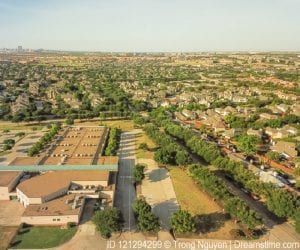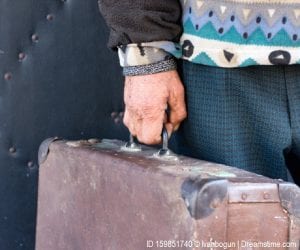Population density, or the proportion of the number of people living in an area to the given amount of space, is a critical tool for understanding the dimensions of humanity. Two countries with a similar overall population size might have dissimilar population densities, creating a very different reality for the people living in these countries.
Same Population Size, Different Population Density
Australia and Taiwan, for example, have similar overall population sizes. But the average population density in Taiwan is 647 people per square kilometer. Australia, on the other hand, has a population density of just 3 people per square kilometer. Population density indicates how proximate people are to other people. Living somewhere with 647 people within a short walk’s distance is very different from living somewhere with only three.
However, measuring population density on a country-wide level still doesn’t tell the entire story. Australia’s overall population density is quite low, but that doesn’t account for how the vast majority of Australia’s population is concentrated into the hospitable areas along the country’s coast. A person living in Melbourne’s Central Business District is among 33,500 people per square kilometer, quite a change from the overall national average.
Densest Neighborhoods in the World
Most countries don’t collect data on a neighborhood-by-neighborhood basis, so compiling a definitive list of the most densely populated neighborhoods globally isn’t possible. But looking at the neighborhoods generally considered to be the densest uncovers some interesting patterns relating to wealth, infrastructure, and overall quality of life for the people living there.
1. Densest Neighborhood in the World – Mong Kok, Hong Kong
Mong Kok, a popular shopping neighborhood on Hong Kong’s Kowloon peninsula, has been described as the densest neighborhood on Earth, with an eye-popping population density of 130,000 people per square kilometer. Different streets feature different types of products, including the famous “Ladies’ Market” where shoppers can purchase cheongsams and jeans alike.

2. Lalbagh, Dhaka, Bangladesh
Lalbagh is a central area in the old city area of Dhaka. It contains the Chawk Bazaar, a large open-air market that was founded in the 17th century under the Mughal Empire. Today, Chawk Bazaar is particularly known for its spice market, which swells with people purchasing traditional foodstuffs during Ramadan.
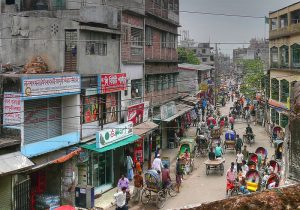
3. Ajeromi-Ifelodun, Lagos, Nigeria
A number of neighborhoods in Lagos could fit onto this list, including Lagos Island, which was the original site of the village that would eventually grow into the larger city. But Ajeromi-Ifelodun stands out as the densest in the city, containing a number of slum areas where residents don’t have access to water and basic sanitation.
4. Santo António, Macau
Macau is densely populated in general, with an average of more than 20,000 people per square kilometer. Santo António is the densest of the five Macanese parishes and contains a number of landmarks like the ruins of the St. Paul Cathedral. The neighborhood is particularly notable for sitting entirely on land reclaimed from the ocean.
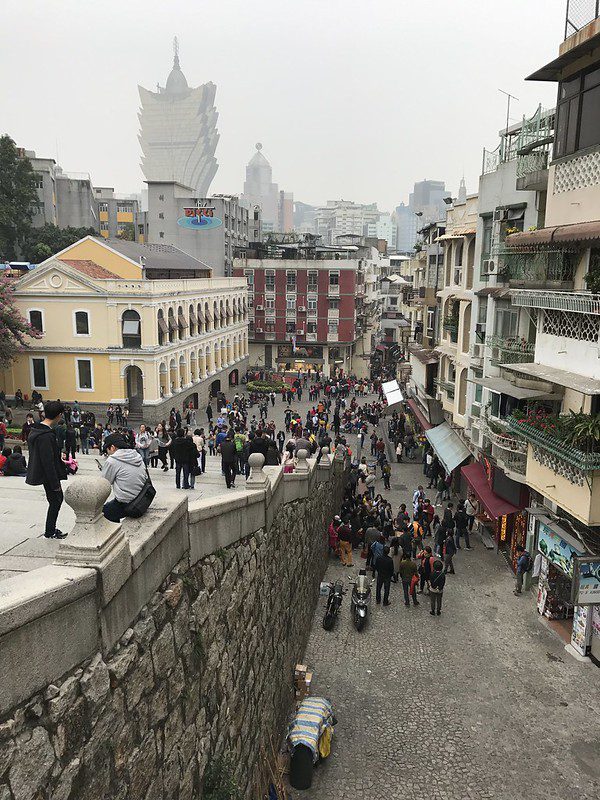
5. Santa Ana, Manila, The Philippines
Santa Ana is the most densely populated neighborhood in what is already the most densely populated city in the world. Spanish conquistadors turned the area over to Franciscan missionaries during the Spanish colonial period, and consequently the area features a number of historical landmarks, including the National Shrine of Our Lady of the Abandoned, which dates to the early 18th century. Beyond its historical attractions, Santa Ana is a major division of a bustling metropolis, home to housing, shopping, and major infrastructure including a hospital and an arena.
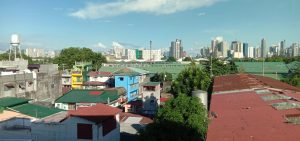
What do Dense Neighborhoods Have in Common?
Neighborhoods with high population densities exist across all continents and under many different circumstances, but certain trends can be observed. Whether rich or poor, these neighborhoods often have a strong focus on shopping and commerce in addition to housing, creating mixed-use areas that attract new residents and visitors alike. Dense neighborhoods are most common in megacities where the population is already high; even Macau, by far the smallest city with a neighborhood on this list, is part of the colossal Pearl River Delta megalopolis.
Urban Density and Sustainability
Living in close proximity to many, many, many other people might not be everybody’s cup of tea. But dense cities are critical to building a sustainable future: economies of scale allow for greater efficiency in things like infrastructure, transportation, and energy distribution that create a higher standard of living for all residents. Understanding life in our densest areas can help us plan for dense cities that support the needs of our growing urban populations.
Image credits: Mong Kok (Mong Kok street 5 by Enoch Lau is licensed under CC BY-SA 3.0 via Wikimedia Commons); Lalbagh (Old Town Dhaka by joiseyshowaa is licensed under CC BY-SA 2.0); Macau (Ruins of St. Paul’s by Chris Yunker is licensed under CC BY 2.0); Santa Ana (View of Santa Ana, Manila from Punta by GinawaSaHapon is licensed under CC BY-SA 4.0 via Wikimedia Commons)



